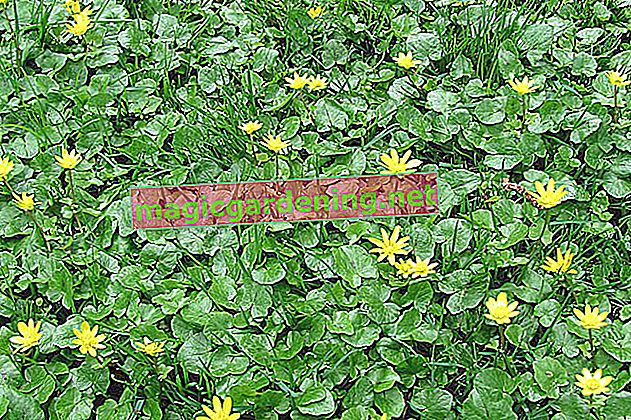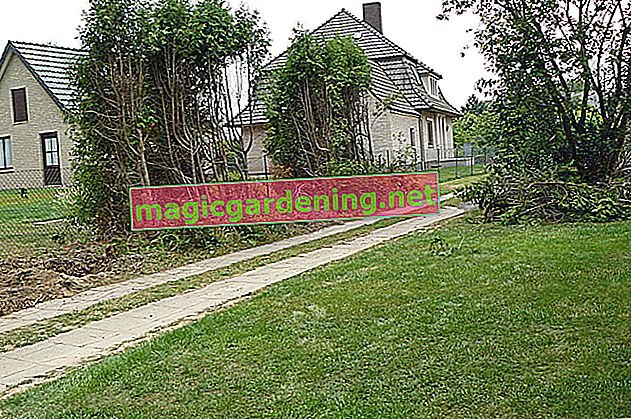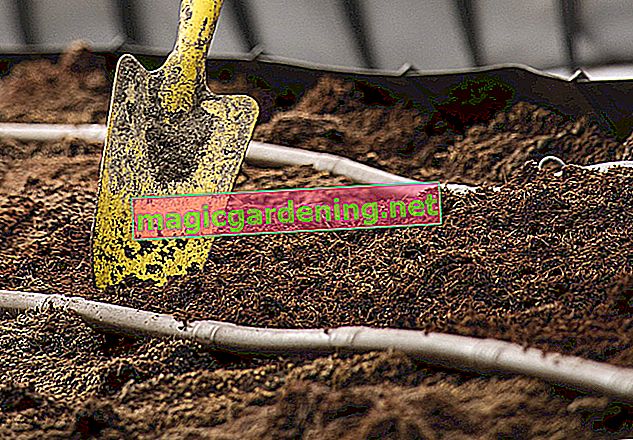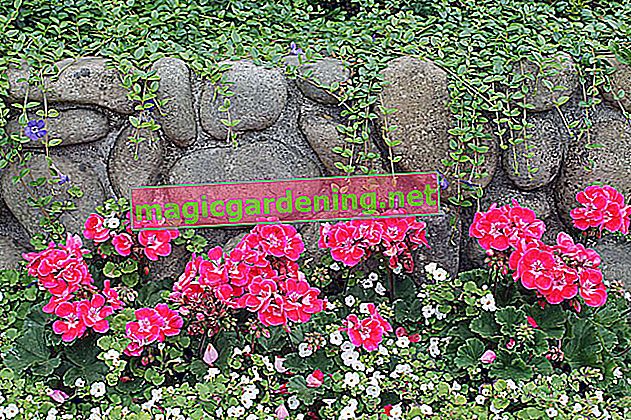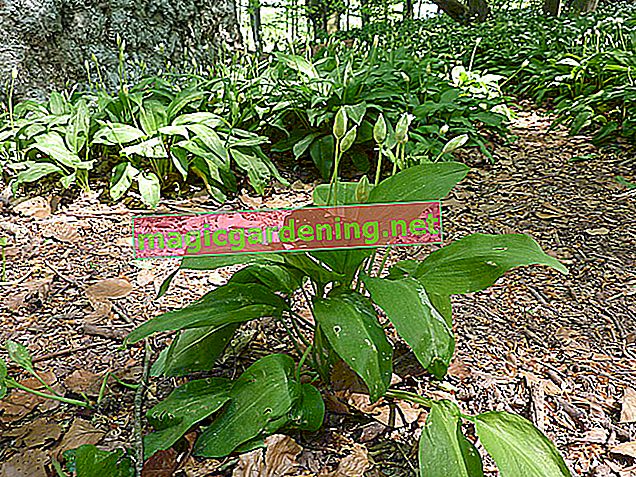
Top 5 boxwood alternatives
The bar is set high for the authentic boxwood substitute. Evergreen foliage, compact growth and pronounced cut tolerance are important criteria for a deciduous wood to represent the classic in beds and tubs. The following table lists the top 5 boxwood alternatives by name with information on advantages and disadvantages:
also read
- The best plants for the Zen garden - a handpicked selection
- Topiary in boxwood - how to cut a pyramid
- Tips and tricks for a successful topiary on boxwood
| Trade name | botanical name | suitable for / as | not suitable for / as | advantages | disadvantage |
|---|---|---|---|---|---|
| Japanese holly | Ilex crenata | Mount, sphere | Rock garden, gravel bed, dry south side | Easy to cut, hardy | toxic, demanding |
| Spindle bush 'Green Rocket' | Euonymus japonicus | Bed border, bucket | Sphere, privacy hedge | Easy to cut, hardy | toxic, topiary useless |
| Dwarf yew 'Renkes Kleiner Grüner' | Taxus baccata | Edging, topiary, sphere | Privacy screen, rock garden, dry or acidic soil | only pruning compatible conifer, robust, easy to care for | very poisonus |
| Honeysuckle 'Maigrün' | Lonicera nitida | Edging, bucket | Sphere, sculpture, privacy screen | Location tolerant, cut compatible | hungry for light, tends to balding, poisonous |
| Native holly 'Heckenzwerg' | Ilex aquifolium | Bed border, grave, bucket | Topiary, tubs, privacy screens | cut resistant, no thorns, | only for sunny locations |
Explanations of the alternative plants
The Japanese holly looks very similar to boxwood. The small premium variety 'Convexa' is very popular for border edging and grave design. Field tests have shown that Ilex crenata is very sensitive to a pH value that is too high. In calcareous soil with more than 6.0 to 6.5 there is a risk of leaf loss. These concerns do not exist with the domestic holly 'Heckenzwerg'.
If you choose the spindle bush 'Green Rocket', avoid all location sensitivities. The dark green leaves shine all year round on the densely branched shrub and care little about local soil conditions. Only in shady and waterlogged locations, 'Green Rocket' is not recommended as a substitute for boxwood.
The honeysuckle has long been known to many gardeners as an easy-care deciduous shrub for the evergreen privacy hedge. With the premium variety 'Maigrün', the plant species makes itself useful as a distinctive alternative to boxwood. Since the honeysuckle thrives without a dominant central shoot, it is ideally suited for shaping into spheres or pyramids.
Are you open to a conifer as an alternative to boxwood? Then the view is directed to the yew tree as the only pruning-compatible conifer in the garden. Instead of dark green leaves, the dwarf yew boasts a picturesque needle dress. In terms of location and care, the mini conifer pulls together with Buxus.
Digression
Cutting can save infested boxwood
A single infestation with the boxwood moth does not mean that the border, ball or hedge is doomed. Before you clear an affected boxwood, a step-by-step rejuvenation cut is worthwhile as a rescue attempt. The best time is in late winter when the weather is frost-free. Do not put bald boxwood on the cane in one go. Cut back a third of the shoots by at least half. Remove dead branches except for a short cone. Then apply a special box tree fertilizer to support new growth. Cover the boxwood with a close-meshed net to prevent new pest infestation.Non-toxic alternative to boxwood

In the family garden, particular sensitivity is required when selecting plants. Poisonous alternatives to boxwood are taboo where there are children and pets. Unfortunately, all representatives of the top 5 are riddled with toxic ingredients. However, gardeners with families do not have to accept compromises in terms of beauty and decorative appearance. The following overview presents the 5 best non-toxic alternatives to boxwood:
- Ball hawthorn 'Compacta' (Crataegus monogyna): densely bushy, evergreen, hardy, well tolerated by pruning
- Dwarf dogwood 'Kelsey' (Cornus stolonifera): compact, dense, frost-resistant, tolerates cutting
- Deutzia, mayflower shrub (Deutzia gracilis): richly branched, dense dwarf shrub, knee-high, hardy
- Dwarf sea buckthorn 'Silverstar' (Hippophae rhamnoides): spherical, dense, silvery leaves, for sunny to shady locations
When choosing non-toxic alternatives to boxwood, it is not possible to compromise. The vast majority of evergreen and wintergreen woody plants use toxic ingredients to defend themselves against predators. Please note that there is no such thing as a completely non-toxic plant for the family garden. Eating leaves or fruits can still cause symptoms of poisoning in children due to an allergy.
Tips
Be courageous about unorthodox alternatives when choosing a border for the cottage garden. Instead of framing a vegetable patch with evergreen dwarf trees, it can be fragrant herbs and flowers. Use lavender, thyme, bobbed basil, blue pillows or upholstered phlox as a substitute for boxwood. When marigolds frame the farm garden bed, the flowers are useful as a defense against cunning pests.
Blossoming substitute plants - Plan B in bloom
Small-leaved rhododendron 'Bloombux' (Rhododendron micranthum) causes a sensation in the garden as an imaginative alternative to the evergreen boredom of boxwood. In June, pink-colored scented blossoms tower over the small, tapering, lush green leaves. With an average height of 80 centimeters, the mini rhododendron is equally suitable for edging beds and buckets. Newcomers to the garden appreciate the dwarf variety's cut tolerance.
Upholstered barberry 'Nana' (Berberis buxifolia) delights with hemispherical growth and orange flowers in May and June. The evergreen, thorn-reinforced dwarf wood forms a hedge to form an impenetrable bulwark that even repels cheeky cats. The small barberry variety combines its decorative advantages with robust cut tolerance. The only downer is an unplanned fall of leaves when there is clear frost in winter.
The third blooming alternative to boxwood is dwarf privet 'Lodense' (Ligustrum vulgare). Dark green, narrow elliptical leaves, dense growth and white blossoms in June / July characterize the picturesque deciduous wood. The mini privet fulfills its task as a boxwood substitute with flying colors and is cut-resistant and frost-resistant. The only negative point is the evergreen leaves, which of course are quickly renewed in spring.

frequently asked Questions
The box tree moth completely destroyed my box hedge. Where can I dispose of the cleared bushes?
It can be assumed that the bare bushes are still infected with eggs or larvae of the box tree moth. Pack each cleared boxwood in a plastic bag. With a trailer or in the trunk, you can transport the bushes to the regional recycling center or a composting facility. Most collection points are now equipped for infected boxwood clippings in order to prevent further spread of the pests with the help of special, lockable containers.
If I plant holly as an alternative to boxwood, can an infestation with boxwood moth be excluded?
Although holly (Illex crenata) look confusingly similar to the box tree, the deciduous trees are spared by the box tree moth. This does not mean that the evergreen ornamental trees are immune to all pests. Most holly species and varieties are targeted by the woolly scale insect and the shoot moth.
Is the spindle bush 'Green Rocket' suitable for the shape cut to the ball in the bucket?
Euonymus japonicus 'Green Rocket' thrives as a columnar spindle bush. The slim, tightly upright growth makes spherical shaped cuts a difficult undertaking. The Japanese spindle Euonymus japonicus 'Microphyllus', which naturally grows wider, is more suitable. You can train the box-leaved barberry 'Nana' (Berberis buxifolia), the holly 'Stokes' (Ilex crenata) and the yew (Taxus baccata) very well.
Can the dwarf yew be raised to border low beds in the cottage garden? The edging shouldn't be more than calf-high.
The dwarf yew 'Renkes Kleiner Grüner' lives up to its name. Only after more than 10 years do the conifers reach a height of 60 to 80 centimeters. By pruning the shrubs every year, you can adjust the height as you wish. The best time is at the end of February / beginning of March. An annual pruning also has the advantage that you counteract the risk of balding.
We would like to replace our 20 meter long boxwood hedge with Ilex crenata or Lonicera nitida 'May green'. We have heard that the box tree moth is already attacking Ilex. Which decision do you advise us to take as an alternative to boxwood?
This statement is new to us. So far, Ilex has proven to be largely inconspicuous for diseases and pests. The boxwood moth that has been brought in has so far only targeted Buxus. Of course, nobody can rule out the possibility that the malware will reorient itself at some point. From our point of view, nothing speaks against Ilex crenata as a replacement plant, especially the varieties 'Stokes' and 'Dark Green'. Lonicera nitida is unpopular with its strikingly long shoots and should be cut several times a year.
Can I grow the honeysuckle 'may green' as a border as narrow as a boxwood hedge?
Experience has shown that the honeysuckle only works as a perfect substitute for boxwood in the first 5 to 10 years. Over time, the bushes tend to bald from below. You can avoid this dilemma by cutting the border into a trapezoidal shape. This ensures that the bed border is leafed from the base to the crown even after years.
The dwarf rhododendron 'Bloombux' is supposed to replace a broken box tree. Is that possible in a sunny location?
With sufficient water supply, 'Bloombux' thrives without any problems in a sunny location. Important to note for the winter time is the protection by a shading net against the blazing winter sun. Water regularly during the cold season as moisture continues to be lost through the evergreen leaves.
Tips
The dwarf spherical arborvitae 'Dancia' (Thuja occidentalis) is gaining ground as a veritable boxwood alternative. The new variety impresses with its spherical silhouette and a modest height of 60 to 80 centimeters. The successful breeding is characterized by reliable winter hardiness and high site tolerance. The easy-care conifer can be used in a variety of ways as a border, grave planting and in a tub.


